Control valves are located as single items in piping systems or are furnished with up and downstream block valves and a bypass valve. These multi-valve arrangements are called control stations.
Tags : #Piping_Engineering #Piping_Layout #Instrumentation #Control_Valve #Control_Station
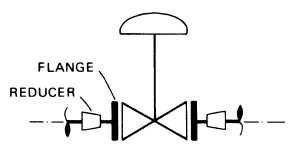
The blocks and bypass valves are used so that the system can continue to operate during maintenance work on the control valve.
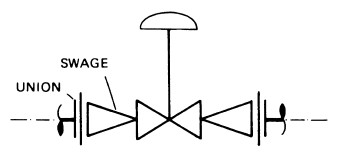
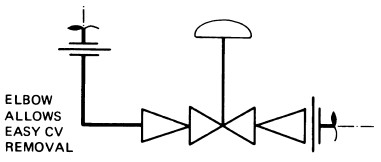
In the most common control valve arrangement, the block valves are located in the vertical section of the assembly, with the control and bypass valve in the horizontal section.
The globe valve can be used to regulate line flow manually while the control valve is out of service.
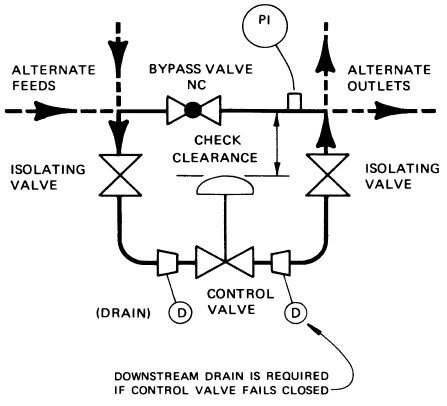
Arrangement for Angle Control Valves
Arrangement (a) and (c) are suitable for sediment free fluids in lines carrying sediments. Place the bypass valve at the highest level than the control valve to reduce the risk of bypass line becoming plugged.
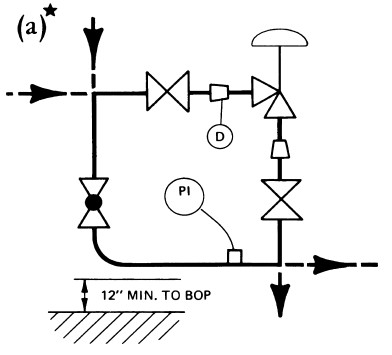
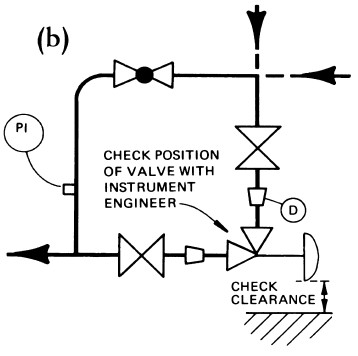
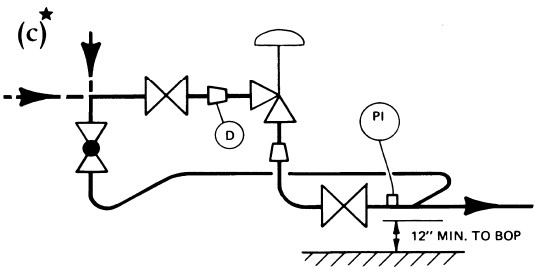
Control Stations for Steam
For other arrangements (e.g. for steam control valve station), the upstream bloc valve is also located in horizontal leg of the piping to accommodate adequate condensate removal.
Station suitable for turbine and other steam users.
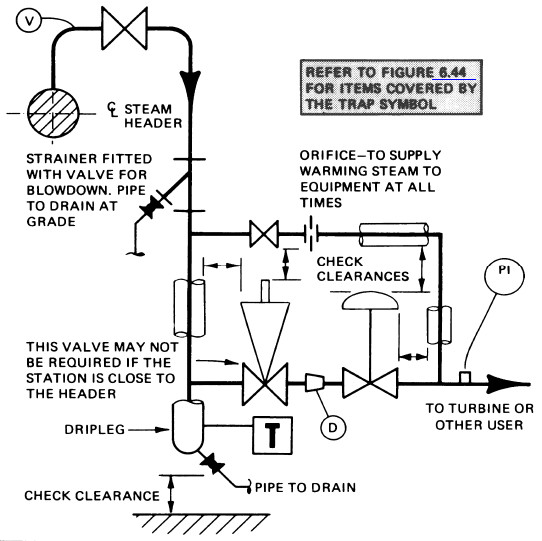
Continuously operating station suitable for all conditions including freezing.
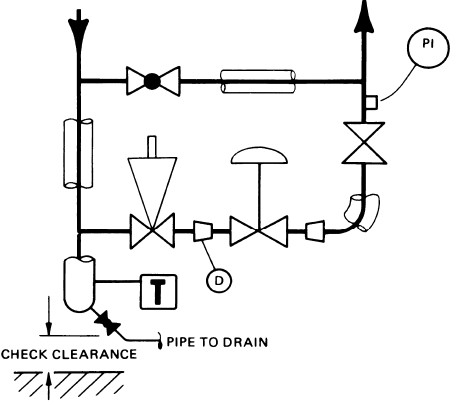
Station for intermittent use suitable for open air use in freezing climate.
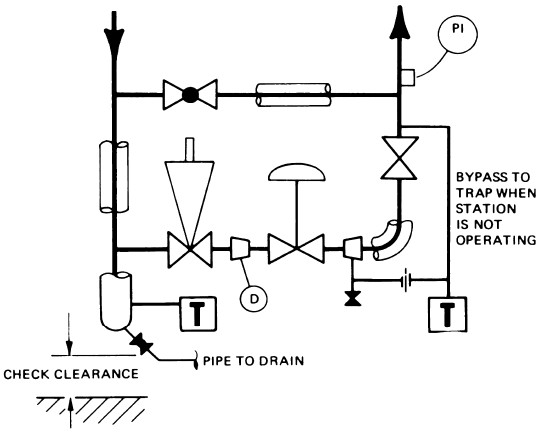
Low point drains and trunion based supports are also furnished at control valve stations.
Stations for liquids harmful to personnel
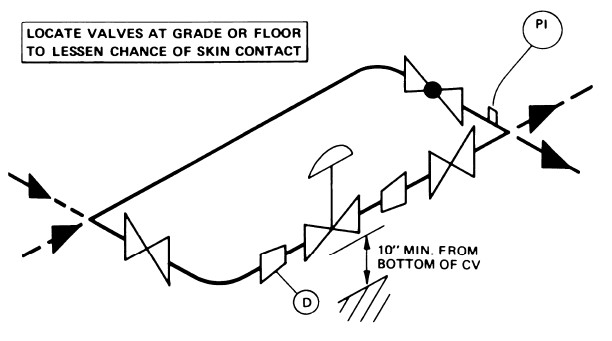
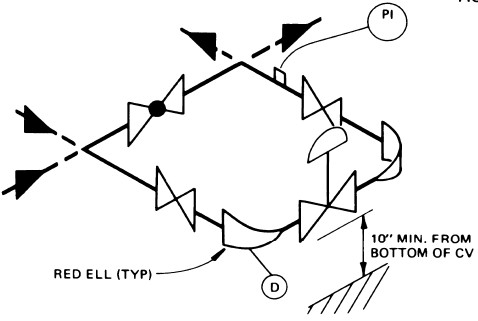
Locating Control Stations
- Control valve stations are preferably located at grade for the inline unit and at main operating levels for the vertical arrangements.
- It is not absolutely necessary to locate control valve stations in such a way that pneumatic or electrical interconnections are kept to a minimum; however, usually, the control valve is located in the same area as its source of control – for example, to facilitate the connection between the vessel level controller and its associated control valve.
- The prime considerations, however, are cost and for the more expensive piping systems, accessibility.
- Control valve stations are located within process areas for ease of operation and maintenance, preferably on either side of the access aisles, adjacent to equipment and structural columns.
- When locating control valves with valve positioners, the plant layout designer must allow adequate clearance between structural columns and vessels.
- In case of fail to open valve, only one drain upstream of control valve is required.
- In Case of Fail to Close valve, two drains on both sides of control valve are required.
Control Valves Piping Layout
Control valves, block and by-pass valves shall be sized on the PID. Control valves shall be accessible from grade or platforms unless otherwise approved for good process or economic reasons on an individual item basis.
Control valves shall be located in sight of instruments or indicators showing the variables they control. Unless otherwise approved by Owner, control valves shall be located high enough to permit valve stem removal, but not higher than 900 mm above grade or platform.
Where vaporization occurs in control valves, they shall be placed as close as practical to the destination of the stream. Control valve bypass piping shall provide sufficient clearance for the removal of the control valve from the loop.
All control valves shall be provided with block valves and bypass valves rated for the same design pressure as the upstream piping. Bypass valves shall be designed for a capacity at least equal to the capacity of the control valve. Flanged spools shall be used between flanged control valves and block valves. The length of the spools shall be sufficient to permit removal of bolts and the installation of drain or vent connections.
Valved 3/4″ drains shall be provided on the isolatable spool upstream of control valves.
All control valves in socket weld piping shall be flanged. The only devices which may be mounted on control valves shall be valve positioners, volume boosters, lock-up relays and pressure controllers. These devices shall be installed so as to be easily accessible for servicing. These devices shall not be mounted when vibration may cause malfunction.
Supporting of Control Stations
Control station groups and by-pass, when located at grade adjacent to rack columns or other structures, are normally supported from grade to avoid additional loads not foreseen during structural design. Groups weighing less than 2500 N may be supported from structure beams.
The use of spring supports at ground is to be minimized..
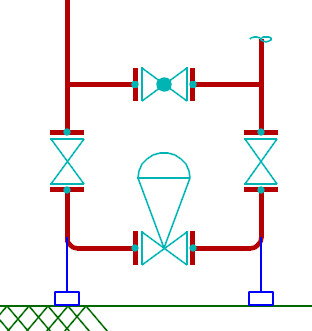
[google-square-ad]
